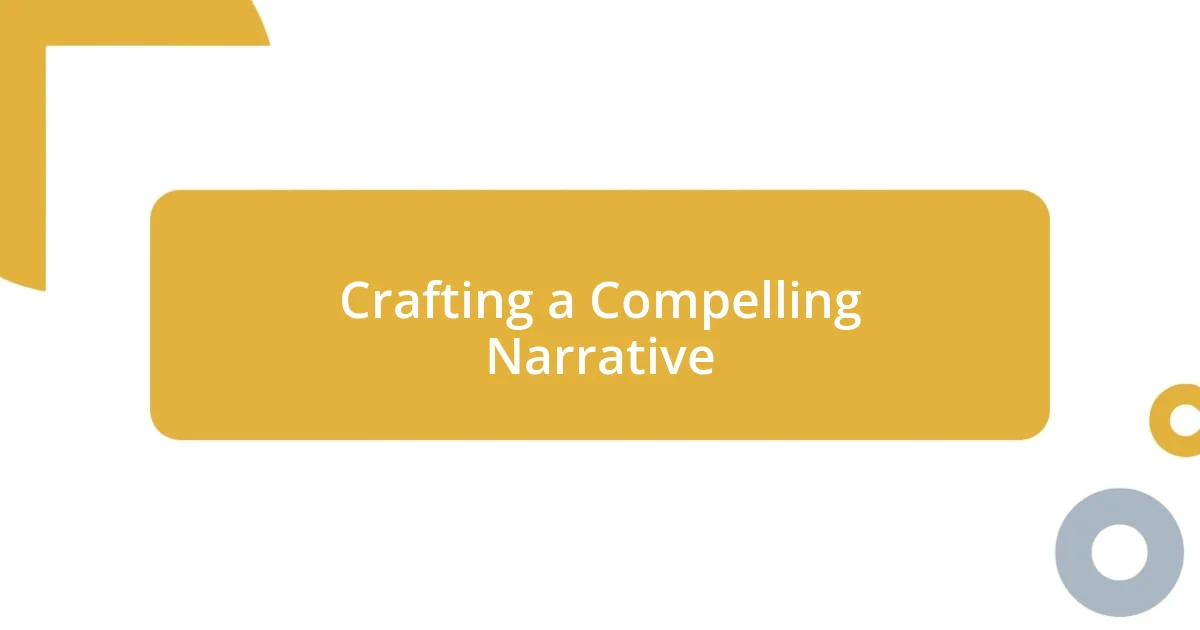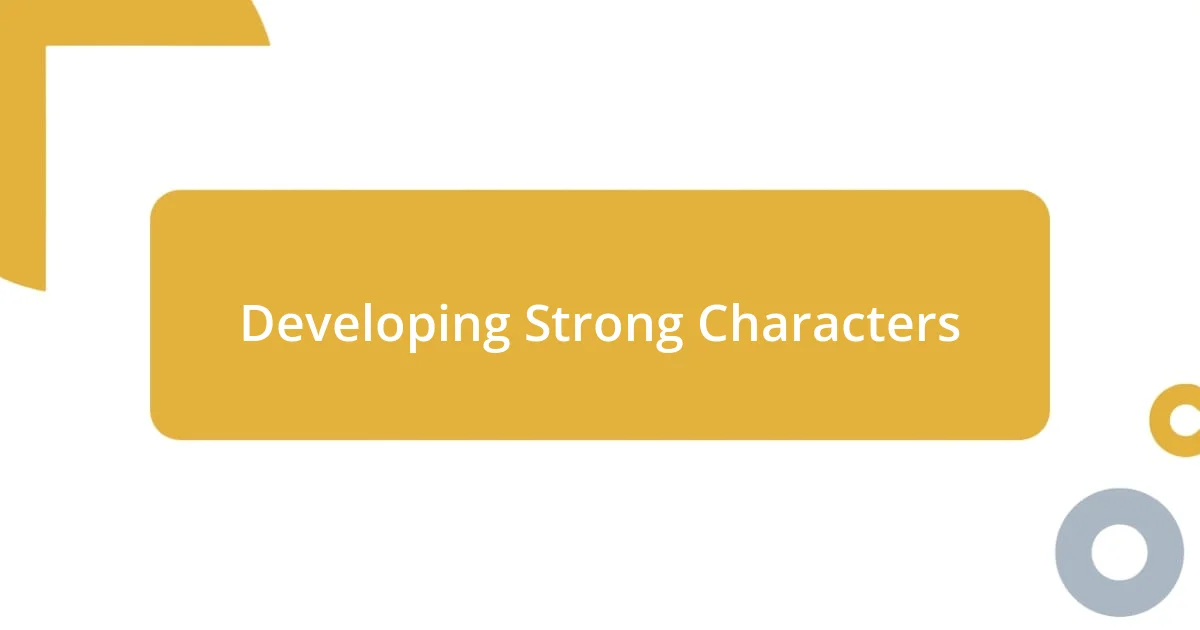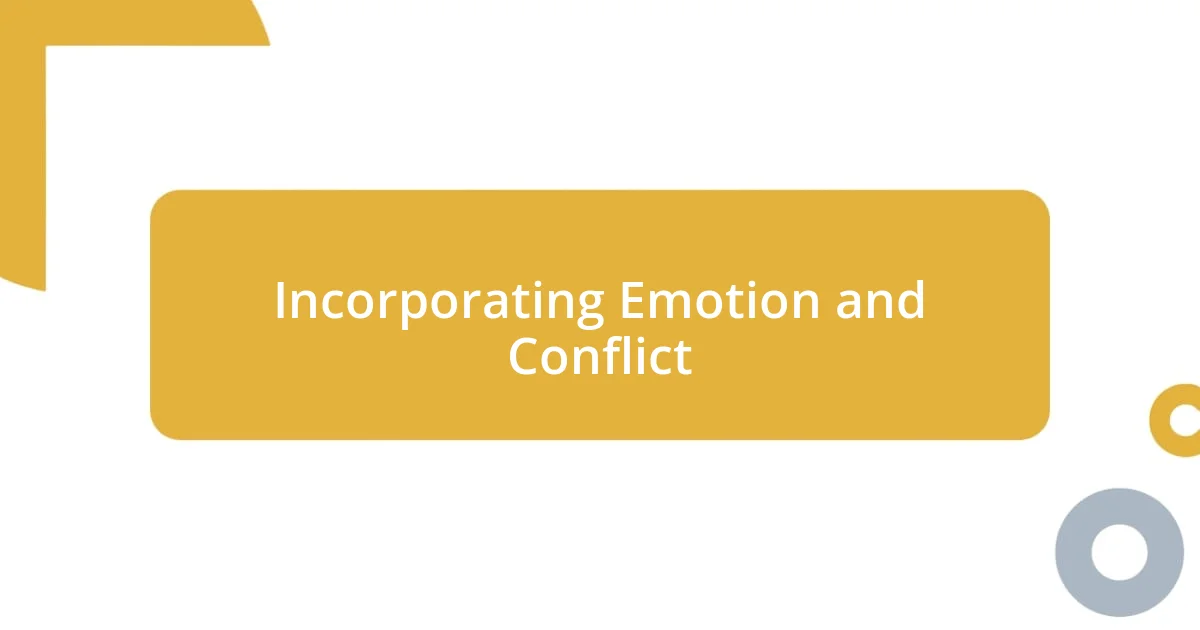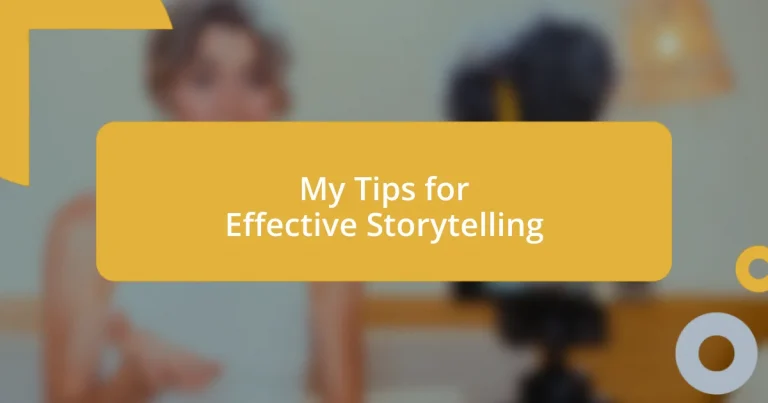Key takeaways:
- Understanding your audience’s values and emotions enhances storytelling effectiveness and deepens connections.
- Strong characters with depth, dynamic relationships, and meaningful evolution engage readers and create relatability.
- Mastering pacing and incorporating emotional stakes in narratives cultivate audience empathy and a memorable experience.

Understanding Your Audience
Understanding your audience is like holding a mirror to your own storytelling. In my experience, when I began tailoring my stories to the specific interests and emotions of my listeners, the connection grew immensely. I often wondered, “What do they really want to hear?” That question sparked a shift in how I approached my narratives.
I’ve found that demographics play a significant role in audience engagement. For instance, when I shared a personal journey about overcoming challenges in a youth program, the younger audience resonated much more when I used relatable language and scenarios. Remembering a time when I spoke to a room full of seasoned professionals, I had to adjust my storytelling techniques to ensure the complexity of the subject matter aligned with their experiences.
It’s essential to dig deeper than just age or background; consider the values and beliefs of your audience. I once had an enlightening moment while presenting to a group passionate about sustainability. Instead of launching into technical details, I shared a heartfelt story about how I changed my own habits. The shift in energy was palpable, and it reminded me that effective storytelling isn’t just about the story itself, but also about the emotional currency I share with my audience.

Crafting a Compelling Narrative
Crafting a compelling narrative hinges on the ability to make your characters and events feel authentic. I vividly recall a time when I infused a minor character in my story with elements of my own life experiences. By giving them a backstory akin to my struggles, the audience felt a genuine connection. It’s fascinating how authenticity breathes life into a narrative, making even the simplest plot resonate on a deeper level.
To elevate your storytelling, consider these key elements:
- Character Development: Invest time in building well-rounded characters who evoke empathy and engagement.
- Emotional Journey: Map out the emotional arc your characters will experience; emotions are what truly bind your audience to your story.
- Conflict and Resolution: Introduce a compelling conflict that challenges your characters, ensuring they undergo growth or transformation, reflecting real-life struggles.
- Imagery and Descriptive Language: Use vivid language to paint scenes in the reader’s mind, enabling them to visualize and feel each moment.
- Pacing: Pay attention to the rhythm of your story; a well-paced narrative guides the audience’s emotional responses and maintains engagement.

Developing Strong Characters
Developing strong characters is crucial in storytelling. I remember a time when I was working on a short story where I struggled to make one character stand out. I decided to give this character a profound backstory, one layered with regrets and dreams. Suddenly, they became more than just a figure on the page; they were relatable, and readers shared their own struggles with me afterward. This experience taught me that depth in character shape connections with the audience.
Moreover, consider the dynamic between your characters. I once crafted a relationship between two characters that mirrored my own friendships. Their exchanges became a dance of emotions, filled with tension and affection, making the audience invest in their journey. By using real-life relationships as a foundation, I discovered how characters could reflect the complexities of human connections, drawing readers into their lives.
Finally, remember to evolve your characters throughout the story. I learned this lesson when I wrote about a character who faced numerous trials, compelling them to change in meaningful ways. Watching readers cheer for their transformation filled me with joy, proving that a character’s growth can resonate deeply. Engaging your audience in this journey means giving them someone they can root for, making the story all the more powerful.
| Element | Description |
|---|---|
| Backstory | Creating depth by giving characters rich histories that influence their actions. |
| Dynamic Relationships | Building connections between characters to reflect real-life emotions and complexities. |
| Character Evolution | Allowing characters to grow and change, creating relatable journeys for the audience. |

Utilizing Visual Elements
Visual elements play a crucial role in storytelling, as they can convey emotions and themes that words alone may struggle to express. I remember a time when I added illustrations to a presentation I was working on; the images not only illustrated my points but also stirred feelings in the audience that enhanced their understanding and retention of the story. Have you ever noticed how a well-placed image can make a scene linger in your mind far longer than mere text?
In my experience, integrating visuals like graphs, maps, or character sketches can provide another layer of engagement. When I included a simple character diagram to depict relationships in my writing, readers commented on how it helped them visualize connections and motivations. It’s fascinating how visuals can break down complex ideas and invite the audience to interact more deeply with the story.
Furthermore, color choices and design styles can evoke specific emotions and set the tone of your narrative. I once experimented with a darker palette in a thriller piece, noticing how it heightened tension and suspense. This realization pushed me to think critically about how every visual aspect could shape a reader’s experience. How do you envision using visuals in your storytelling? Let them enhance your narrative, guiding your audience’s emotions and imagination along the way.

Incorporating Emotion and Conflict
Incorporating emotion and conflict into your storytelling is where the magic truly happens. I recall a project in which I introduced a fierce rivalry between two central characters. Their confrontations were electric, filled with raw emotion, and watching those dynamics unfold on the page was exhilarating. It’s amazing how a well-placed conflict can ignite passion in both the characters and the readers, drawing them deeper into the story.
The beauty of conflict lies not just in the clash of characters, but in the emotional stakes you create. I once penned a story about a mother’s struggle to connect with her rebellious daughter. The tension was palpable, stemming from their differing desires and past traumas. By weaving in layers of emotion, I could see readers experiencing empathy and discomfort, which sparked conversations about their own family dynamics. Have you ever felt pulled between love and disappointment? That’s the kind of resonance I strive for in my stories.
Additionally, don’t shy away from making your audience feel unsettled. I remember crafting a heartbreaking scene where a character faced a devastating loss. I poured my own grief into those words, and the response was profound; readers shared how they reflected on their own experiences of loss and healing. By allowing conflict to bear the weight of strong emotions, you create an unforgettable journey that stays with your audience long after they’ve closed the book. Isn’t that the goal we all strive for in storytelling?

Mastering the Art of Pacing
Mastering the pacing in storytelling can transform a narrative from ordinary to extraordinary. I remember a short story I wrote that initially dragged in the middle because I was hesitant to shift gears. When I revisited the draft, I decided to cut down some exposition to quicken the pace. The immediate effect was electrifying—my readers expressed exhilaration at how each moment built tension, and I realized that sometimes, less truly is more.
Finding the right rhythm involves knowing when to speed up the action and when to slow it down, allowing readers to soak in pivotal moments. For instance, in a recent draft, I intentionally lingered on a character’s internal conflict, crafting a heartbeat-like rhythm that matched their emotional turmoil. This choice led readers to empathize deeply with the character; they felt every second stretch, mirroring the protagonist’s anxiety. Have you ever held your breath during a crucial scene? That’s the power of perfect pacing in motion.
Remember, pacing isn’t just about the speed of your plot; it’s also about the emotional journey you’re crafting. I’ve learned that varying sentence lengths can create a natural ebb and flow. When I wrote a climactic scene with quick, punchy sentences, it felt like a thrill ride. In contrast, when I switched to longer, reflective passages afterward, it provided a much-needed breath. How do you play with pacing in your writing? Embrace the process, and allow your story to dance between tension and release.

Refining Your Storytelling Skills
To refine your storytelling skills, I’ve found that reading widely can be incredibly beneficial. I remember immersing myself in various genres, from fantasy to memoir. Each style taught me something new about voice and structure, allowing me to discover elements I wanted to incorporate into my own writing. Have you ever stumbled upon a book that entirely shifted your perspective on storytelling? Those moments can be game-changers.
Another crucial aspect is feedback. I used to shy away from sharing my drafts, thinking they’d never measure up. But once I started sharing with trusted peers, I realized how valuable their insights were. That constructive criticism clarified my strengths and highlighted areas for improvement. Engaging in discussions about my stories opened my eyes to new ideas and angles I hadn’t considered. Have you ever hesitated to seek feedback on your work, only to regret missing the opportunity?
Lastly, practice is essential. You won’t refine your skills overnight, and that’s perfectly okay. I often dedicate time to write short pieces on various themes, exploring different characters and scenarios. This experimentation not only enhances my versatility but also helps me find my unique storytelling voice. So, what have you been doing to hone your craft? Embrace every writing opportunity; it’s all part of your growth as a storyteller.














